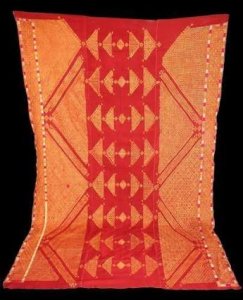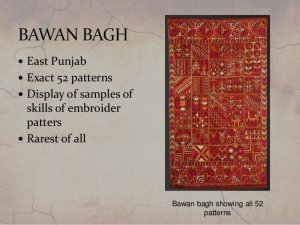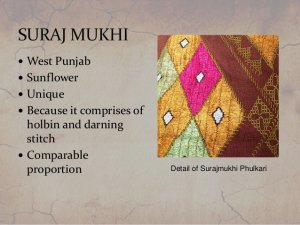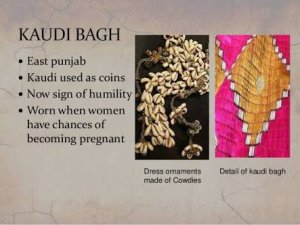Phulkari Embroidery is very cool to wear. Phulkari came into existence from Punjabi culture since ancient times. Phulkari Embroidery means ‘flower work’. It is a type of embroidery that is spun from the ‘charkha’ which is designed on dupattas, shawls, Kurtis etc.
The highlight of this embroidery is the usage of the darn stitch on the back side of the cloth with coloured silk texture thread.
It was 1st mentioned in the romantic stories of Heer and Ranjha written by Waris Shah. Since then Phulkari became a dream attire for every Punjabi girl.
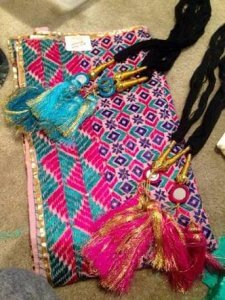
Origin of the Phulkari Embroidery
Phulkari was brought to the Indian Subcontinent by the migrant Jat people of Central Asia in ancient times. No documents explained the techniques and patterns about the embroidery work but were only transmitted by word of mouth.
This tradition was related to the Sikh heritage but was also shared with Hindus & Muslims. The embroideries were a mere reflection of a woman’s life and every woman had her unique way of representing it.
Earlier, this art offered complete freedom of creativity. Motifs used were an adroit representation of the dear and sundry values of Punjab.
Since it was essentially a communal activity, colors and shades were somewhat run-of-the-mill, however, the fact that most of the women were experts in Phulkari would even make mediocre look exquisite.
This face of fashion was a reflection of the routine and regular life of a typical Punjabi woman.
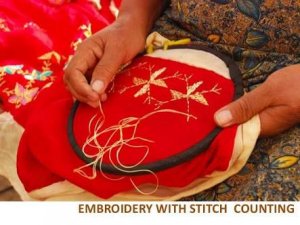
History of Phulkari Embroidery
Thread by thread, each motif is made in a geometric grid, which is a specific pattern for coming up with a curvilinear final output.
Long and short darn stitches are used for creating horizontal, vertical and diagonal thread work, inspired by the routine of the artists, nature, flowers etc.
Earlier, Punjabi women used to come together after finishing their household chores for chit-chatting and weaving.
But now, this very pleasure some activity has become a business which has given employment to women. Though it was never made for commercialization. For Punjabi people, it is more like a traditional culture than just embroidery.
Variety of the Phulkari Embroidery
There is numerous variations of Phulkari which are worn for several occasions by specific category or women or so. Fortunate are Indians who have easy access to this beautiful attire.
Variety is as follows :
Thirma : It’s a symbol of purity, hence worn by elders or widows or given a choice due to aesthetic reasons.
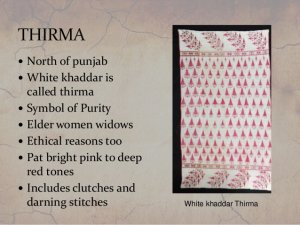
Darshan Dwar: Made for a temple as an offering to thank god after a wish has been fulfilled.
Chope: These are single colored, usually on the borders.
Bawan Bagh: It is a Mosaic of 52 different patterns which decorate the piece and is said to be the rarest of all.
Vari da bagh: Mainly, made on an orange-reddish khaddar with the main pattern being a group of 3 or 4 small concentric lozenges (diamond) of growing size.
Surajmukhi : As the name suggests, Sunflower design is the main pattern in this type.
Meenakshi: Made of gold and white colored pat, is decorated with small multicoloured lozenges referring to enamel work (meenakari).
Kaudi Bagh: These are chains of small white squares representing stylized cowries.
Pachranga: Decorated with designs of 5 different colours.
Satrangi: Decorated with designs of 7 different colours.
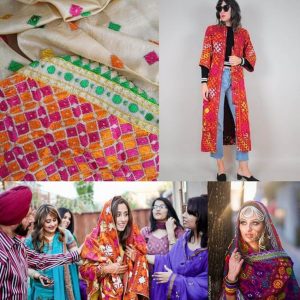
Phulkari dupattas can be taken with plain Kurti-Patiala or a cotton top worn over rugged denim for a contemporary look.
Also, Phulkari suit or sari mixed and matched with ethnic jewelry in contrast colors looks elegant. Oxidized silver jewelry is most preferred over Phulkari for a traditional look.


